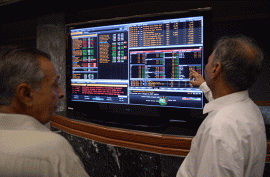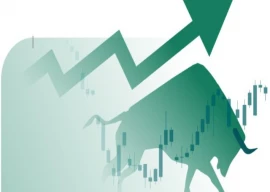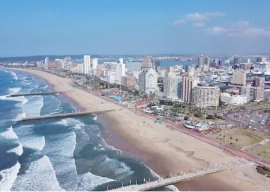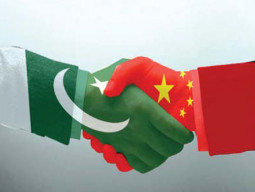
The report notes that New Delhi has deliberately kept tariffs at high levels under its flagship “Make in India” policy with a view to attracting foreign investment and boosting domestic manufacturing.
The report raises an important point - the goals to attract foreign investment and promote external trade may be mutually incompatible. Export and direct investment abroad are two different modes of entering a foreign market. Each mode has its peculiar prerequisites.
Direct overseas investment requires a much higher degree of commitment and risk on the part of an enterprise than exports. All else equal, an enterprise will prefer foreign direct investment (FDI) to exports if a foreign market has very high import tariffs, which will make it difficult for exports to compete with domestic goods.
The answer to this problem is to establish production facilities in the target country. Such a foreign market entry strategy is also called “jumping the tariff wall.”
This wedge between the FDI and foreign trade has important implications for the net FDI receiving economies like Pakistan. In case such countries want to pursue an export-led growth strategy, they need to slash import tariffs, particularly for capital goods and raw material, so that their exports, which make use of imported products, become competitive in foreign markets.
However, lower tariffs will make such countries a less attractive market for the FDI. Moreover, like domestic businesses, foreign investors also demand protection in the form of high import tariffs to avoid competition with imported products. That is the reason that foreign investors generally enter into an agreement with the host government for maintaining high tariffs on the products of their interest as a precondition for injecting capital.
India has been a beneficiary of its high tariff wall in terms of FDI. Over the past 10 years, India has received cumulative FDI inflows of $358 billion, which on average come to $35.8 billion per annum. Average FDI-GDP ratio has been around 2% (the World Bank data). During this period, India has maintained a rather restrictive trade regime. At present, India’s average applied tariffs are 13.8%, which are the highest for a major economy.
This export-FDI trade-off is also relevant for Pakistan. Over the past one decade, Pakistan has attracted total FDI of $22.10 billion or $2.21 billion per annum. Average FDI-GDP ratio has been around 1% (the World Bank data).
Tariffs slashed unilaterally
Ever since Pakistan began to liberalise its economy in the late 1980s, tariffs have been reduced mainly for two reasons: One, as part of an agreement or understanding reached with multilateral donors, such as the International Monetary Fund (IMF), in the name of tariff rationalisation.
This happened, for example, in the 1990s when tariffs were slashed unilaterally on most of the tariff lines. From 225% in 1988-89, the maximum applied tariffs were reduced to 100% by 1992-93. Average applied tariffs were then slashed to 51% by 1995-96. By 2007-08, the average applied tariffs had come down to 13.5%.
At present, Pakistan’s average applied tariffs are 12%. Few other developing countries have reduced tariffs so drastically on a unilateral basis. As a result, the manufacturing sector, which on average grew 9.9% during the 1960s and 8.2% during the 1980s, registered a modest growth of 4.8% during the 1990s, even less than the 5.3% growth recorded during the decade of nationalisation in the 1970s.
A wide discrepancy exists between Pakistan’s bound (in the WTO) and applied tariffs. Compared with the average applied tariffs of 12%, Pakistan’s average bound tariffs are 61%. Product-wise, Pakistan’s average bound and applied tariffs are: electrical machinery (bound 64%, applied 15%), non-electrical machinery (bound 61%, applied 10%), chemicals (bound 57%, applied 8%), and leather and footwear (bound 66%, applied 20%).
As per World Trade Organisation (WTO) rules, the applied tariffs can’t exceed bound tariffs but they can be equal to the latter. This means Pakistan still has a lot of policy space available to raise import tariffs.
FTAs
Tariffs have also been cut to meet commitments made under the free trade agreements (FTAs), particularly under the Pak-China FTA. In first phase of the FTA, Pakistan gave China concessions on 5,686 tariff lines, of which tariffs were eliminated from 2,423 tariff lines.
The second phase of Pak-China FTA, which is likely to start soon, will result in further substantial tariff cuts. Seldom tariffs have been brought down as part of a well-thought-out industrial strategy. As a result, the country had to face de-industrialisation without its export sector becoming competitive.
The Pak-China FTA came into force in 2007. Between 2008-09 and 2017-18, manufacturing registered a lacklustre growth of 3.2%. At the same time, Pakistan’s imports from China went up from $4.1 billion in 2007 to $14.5 billion in 2018.
Imports of machinery and mechanical appliances, and electronic equipment have risen from $0.695 billion to $3.01 billion and from $1.01 billion to $3.08 billion respectively during the said period. For these two product categories, Chinese imports have been granted duty-free treatment or low tariffs, which have made export of capital equipment a more attractive option for the Chinese than setting up production facilities in Pakistan.
Tariff cuts and slow manufacturing growth have caused the surge in overall import demand without a proportionate increase in exports. Investment prospects have also been adversely affected as the duty reduction has made export a better option for foreign enterprises than investment.
Not only has Pakistan received low FDI inflows, the FDI has been concentrated heavily in non-manufacturing sectors, such as telecommunications, finance and energy. According to the Board of Investment (BOI), between FY10 and FY18 Pakistan received total FDI inflows of $16.85 billion, out of which energy, finance, IT and construction together accounted for $10.62 billion. The share of the star textile sector in the FDI was $1.93 billion (11.5% of the total).
A country’s import regime is one of the several factors that affect the FDI inflows. Other factors include market size and growth, FDI regulatory framework, contract enforcement, overall macroeconomic environment and security situation.
Pakistan is one of the largest markets in the world and offers the most liberal FDI regime in the region. However, low import tariffs together with a not-so-conducive macroeconomic and security situation and weak contract enforcement have hindered FDI inflows, particularly in manufacturing.
The moral of the story is that while it may be deemed to rationalise tariffs to boost exports, such a strategy may undercut efforts to attract the FDI. It is not always good to talk about enhancing exports and FDI inflows in the same breath.
The writer is an Islamabad-based columnist
Published in The Express Tribune, April 22nd, 2019.
Like Business on Facebook, follow @TribuneBiz on Twitter to stay informed and join in the conversation.


















COMMENTS
Comments are moderated and generally will be posted if they are on-topic and not abusive.
For more information, please see our Comments FAQ